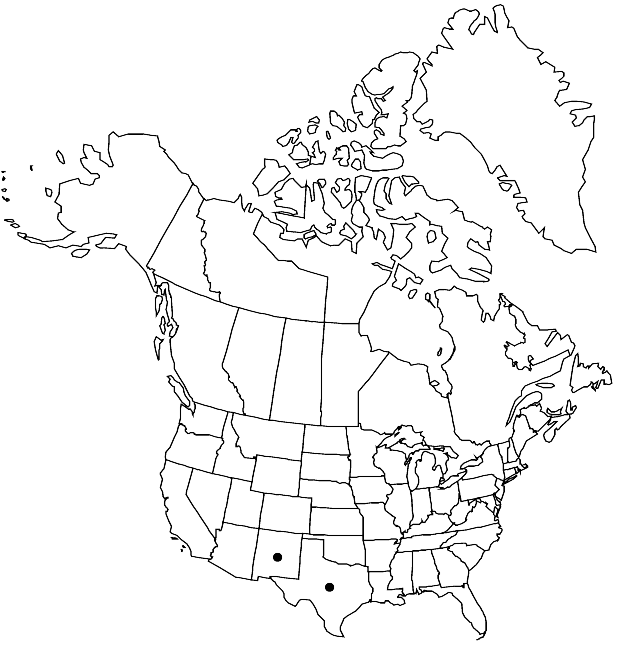Difference between revisions of "Thelypodium texanum"
Contr. Dudley Herb. 3: 371. 1946.
FNA>Volume Importer |
FNA>Volume Importer |
(No difference)
| |
Revision as of 20:21, 24 September 2019
Annuals; slightly glaucous, glabrous. Stems usually branched distally, 1.3–4.8(–6.1) dm. Basal leaves (and proximal cauline): petiole 1–2.5(–4) cm; blade oblanceolate or spatulate in outline (lateral lobes often oblong, sometimes ovate), (3.4–)5–15(–24) cm × (11–)15–35(–55) mm, margins pinnately lobed (lobes dentate, entire, or repand). Cauline leaves petiolate; blade often pectinate (lobes linear), similar to basal, much smaller, margins pinnately lobed. Racemes somewhat lax, considerably elongated in fruit. Fruiting pedicels horizontal to divaricate, sometimes reflexed, straight or incurved, slender or stout, (4–)6–2(–3.5) mm, slightly flattened at base. Flowers: sepals spreading or ascending, oblong to linear-oblong, (2.5–)3.5–5 × 1–1.5 mm; petals white, spatulate to oblanceolate, (3.5–)4–6.5(–7) × (0.5–)1–2 mm, margins not crisped, claw differentiated from blade (widest at base); nectar glands confluent; filaments equal, (4–)4.5–6.5(–7) mm; anthers oblong, (1–)1.5–2 mm, circinately coiled; gynophore 0.5–1(–2) mm. Fruits usually divaricate, rarely ascending, torulose, straight or slightly recurved, flattened, (1.9–)2.8–6(–7) cm × (1–)1.3–1.5(–1.7) mm, (replum not constricted between seeds); ovules 28–48 per ovary; style usually conical to subconical, rarely subcylindrical, 0.8–1.5(–3) mm. Seeds (1–)1.2–1.5 × 0.8–1(–1.3) mm. 2n = 26.
Phenology: Flowering Feb–Apr.
Habitat: Barren hillsides, creek beds, stream banks
Discussion
The type of Thelypodium tenue is an immature, somewhat abnormal specimen with rather slender pedicels longer than those typical of T. texanum. In all other aspects, including habitat and geography, it belongs in T. texanum. Repeated attempts to recollect T. tenue were unsuccessful. Plants of T. texanum disjunct in New Mexico were misidentified by R. C. Rollins (1993) as Sibara grisea.
Selected References
None.
